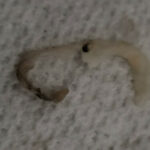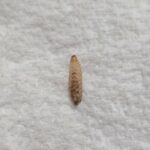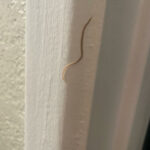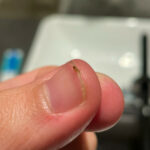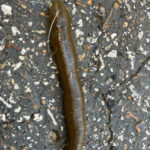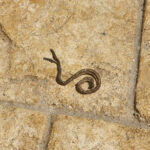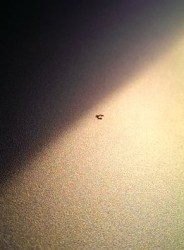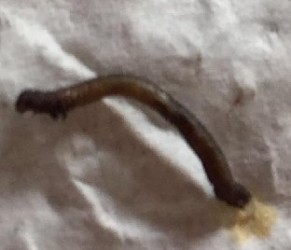The swallowtail worm is the larvae of the swallowtail butterfly. The swallowtail butterfly is any of a group of butterflies in the family Papilionidae (order Lepidoptera). The swallowtail butterfly can be found all over the world and it can be identified by the colorful markings on the hindwings. This area of the hindwings resemble tails, which is how the creature got its name.
The larvae of the swallowtail butterfly are just as brightly colored as the adult. The swallowtail worm has black and yellow eye-like spots on the thorax. Some larvae have scent glands. When agitated, the swallowtail worm can discharge a foul-smelling substance to ward off an attack.
Swallotwail worms, also called “parsley worms,” feed on fennel, parsley, carrots, and dill. The swallowtail butterfly feed on nectar. Although swallowtail worms are cute and the butterflies are even cuter, the larvae may be an unwelcome guest in crop fields. If your crops or gardens are suffering due to a swallowtail worm infestation, there are several ways to get rid of them without harming the beneficial earthworms living below.
Earthworms play an important part in fertilizing the soil and they also help with oxygen and water flow into the soil. Earthworms excrete tons of castings (excrement) each year, which is a powerful fertilizer. Just think, 25 earthworms per square foot of soil equal 1 million earthworms per acre. In healthy soil, 40 tons of castings per acre pass through earthworms’ bodies daily. A new U.S. study suggests that there are 1.5 million worms per acre, which move 20 tons of earth each year.
Earthworms also burrow into the soil creating passageways for oxygen and water. Because earthworms are so important to the survival of the earth’s plants, trees, and crops, when trying to get rid of the swallowtail worm, you must take special care not to harm the earthworms.
There are several effective control methods including:
- Insecticide Sprays
- Timed Sprays Using Degree-Day Emergence
- Mechanical Hand Picking
- Bacterial Spray Bacillus thuringiensis (Bt)
Insecticide Sprays
Stomach insecticides are very useful for control of worms. You must cover foliage completely because the cocoon protects the larvae from contact with the spray. Early sprays against young larvae are more effective than later applications. Just a few options include: acephate (Orthene), bendiocarb (Ficam, Turcam), bifenthrin (Talstar), carbaryl (Sevin), chlorpyrifos (Dursban), cyfluthrin (Tempo), diazinon, dimethoate (Cygon), fluvalinate (Mavrik), malathion, nicotine sulfate, pyrethrum, permethrin (Pounce), rotenone and trichlorfon (Dylox, Proxol).
Timed Sprays Using Degree-Day Emergence
Using a base temperature of 14.4 degrees C (57.9 degrees F) the median first emergence is 380 DD base 14.4 degrees C (716 DD degrees F) and the median last emergence is 572 DD base 14.4 degrees C (1062 DD degrees F). Allow for an extra week of ballooning after the last emergence mark has been reached before applying Bt or an insecticide. A less precise degree-day model uses a 50 degrees F base, which calculates last emergence around 900 DD units.
Mechanical Hand Picking
If the chrysalis (cocoon) is easily reached, it may be picked off the plant and squashed. This can be done easily in the late fall when deciduous foliage has been dropped or the bits of plant material on the cocoon turn brown and can be easily located on evergreens. Be sure to cut any additional attachments so that the branch will not be girdled in the future.
Bacterial Spray Bacillus thuringiensis (Bt)
Bt can be effective in controlling swallowtail larvae if it is used against young larvae. Applications should be made around June after the eggs have hatched.
All About Worms is always free, always reader-supported. Your tips via CashApp, Venmo, or Paypal are appreciated! Receipts will come from ISIPP Publishing.




